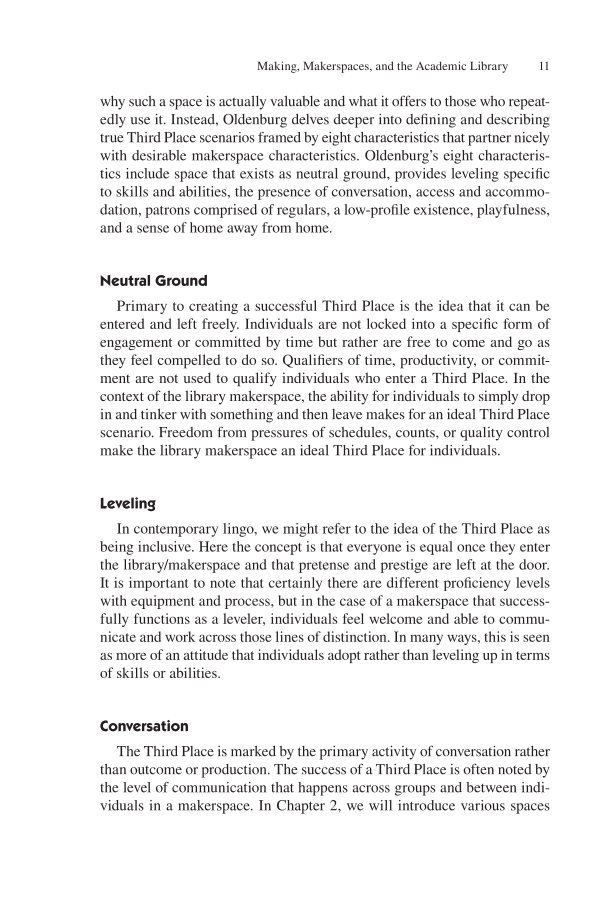Making, Makerspaces, and the Academic Library 11 why such a space is actually valuable and what it offers to those who repeat- edly use it. Instead, Oldenburg delves deeper into defining and describing true Third Place scenarios framed by eight characteristics that partner nicely with desirable makerspace characteristics. Oldenburg’s eight characteris- tics include space that exists as neutral ground, provides leveling specific to skills and abilities, the presence of conversation, access and accommo- dation, patrons comprised of regulars, a low-profile existence, playfulness, and a sense of home away from home. Neutral Ground Primary to creating a successful Third Place is the idea that it can be entered and left freely. Individuals are not locked into a specific form of engagement or committed by time but rather are free to come and go as they feel compelled to do so. Qualifiers of time, productivity, or commit- ment are not used to qualify individuals who enter a Third Place. In the context of the library makerspace, the ability for individuals to simply drop in and tinker with something and then leave makes for an ideal Third Place scenario. Freedom from pressures of schedules, counts, or quality control make the library makerspace an ideal Third Place for individuals. Leveling In contemporary lingo, we might refer to the idea of the Third Place as being inclusive. Here the concept is that everyone is equal once they enter the library/makerspace and that pretense and prestige are left at the door. It is important to note that certainly there are different proficiency levels with equipment and process, but in the case of a makerspace that success- fully functions as a leveler, individuals feel welcome and able to commu- nicate and work across those lines of distinction. In many ways, this is seen as more of an attitude that individuals adopt rather than leveling up in terms of skills or abilities. Conversation The Third Place is marked by the primary activity of conversation rather than outcome or production. The success of a Third Place is often noted by the level of communication that happens across groups and between indi- viduals in a makerspace. In Chapter 2, we will introduce various spaces
Document Details My Account Print multiple pages
Print
You have printed 0 times in the last 24 hours.
Your print count will reset on at .
You may print 0 more time(s) before then.
You may print a maximum of 0 pages at a time.





















































































































































































